

Dive into the vibrant history of artistic expression—from ancient cave walls to modern canvases.
23 January 2024
EXPLORE DEPARTMENT REQUEST A VALUATION CONTACT A SPECIALIST
Fingers, brushes, palette knives, sponges—even whole human bodies. These are just a few of the implements artists have used throughout history in the application of paint to a near-infinite variety of surfaces. Perhaps first among these surfaces were cave walls, where some 40,000 years ago civilisations as far flung as France and Indonesia used charcoal and iron oxides to depict figures on stone.
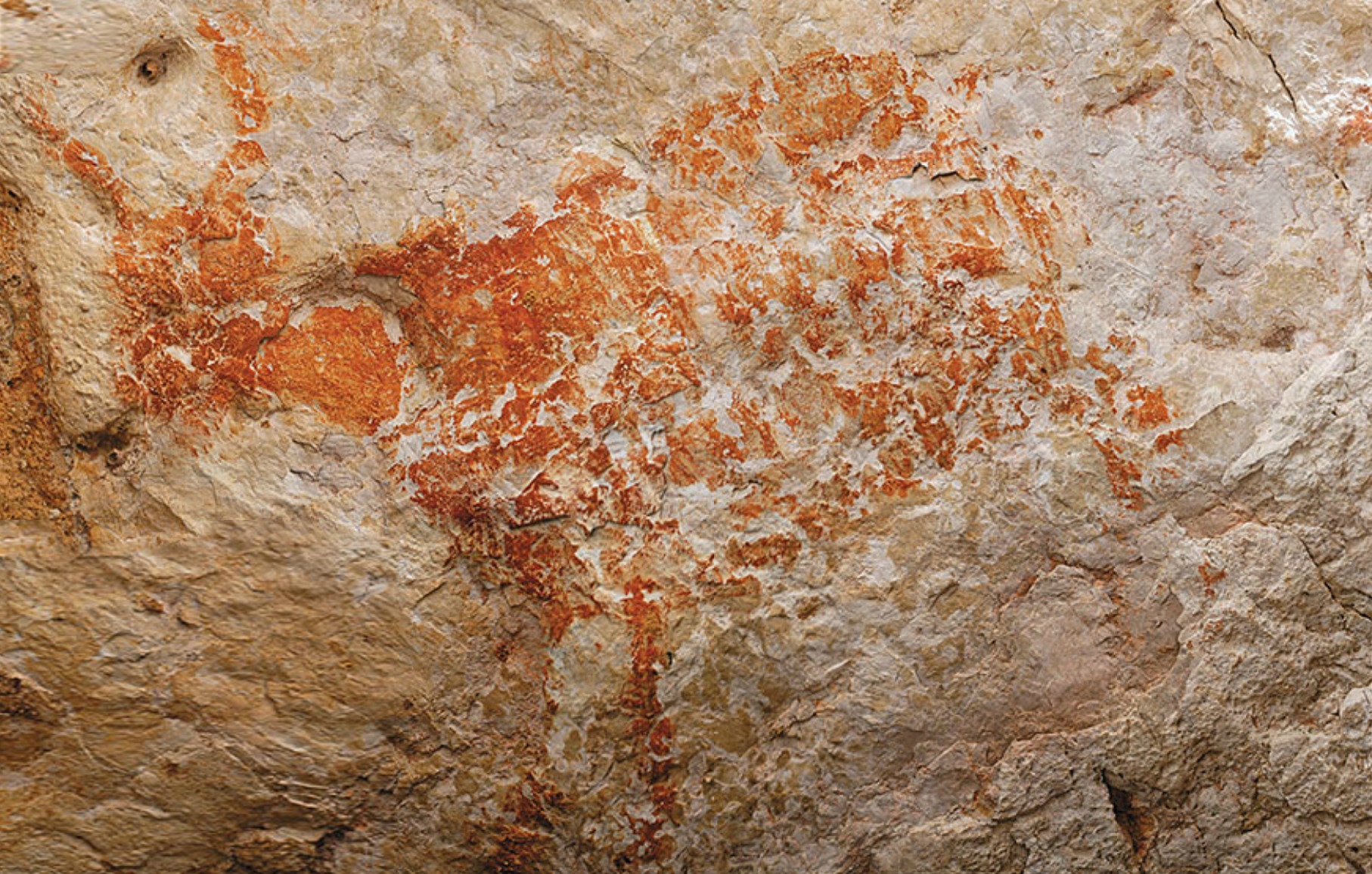
Cave Painting in Kalimantan, Indonesia, c. 42,000 BC
@ photo Luc-Henri Fage, www.fage.fr., Public domain, via Wikimedia Commons
By 2000 BC, wall painting began to be done in fresco. This technique demands the quick-working of artists; fresco requires the application of water-based paint to still-wet plaster. Fresh sections of plaster would be applied each day, and the artist and his or her (though usually his) assistants must complete painting that area before the surface dried. For a surface as vast as the ceiling of the Sistine, painted 1508-12 AD, so high above the heads of the viewer, this could motivate huge, sweeping strokes of paint to capture a figure or garment.
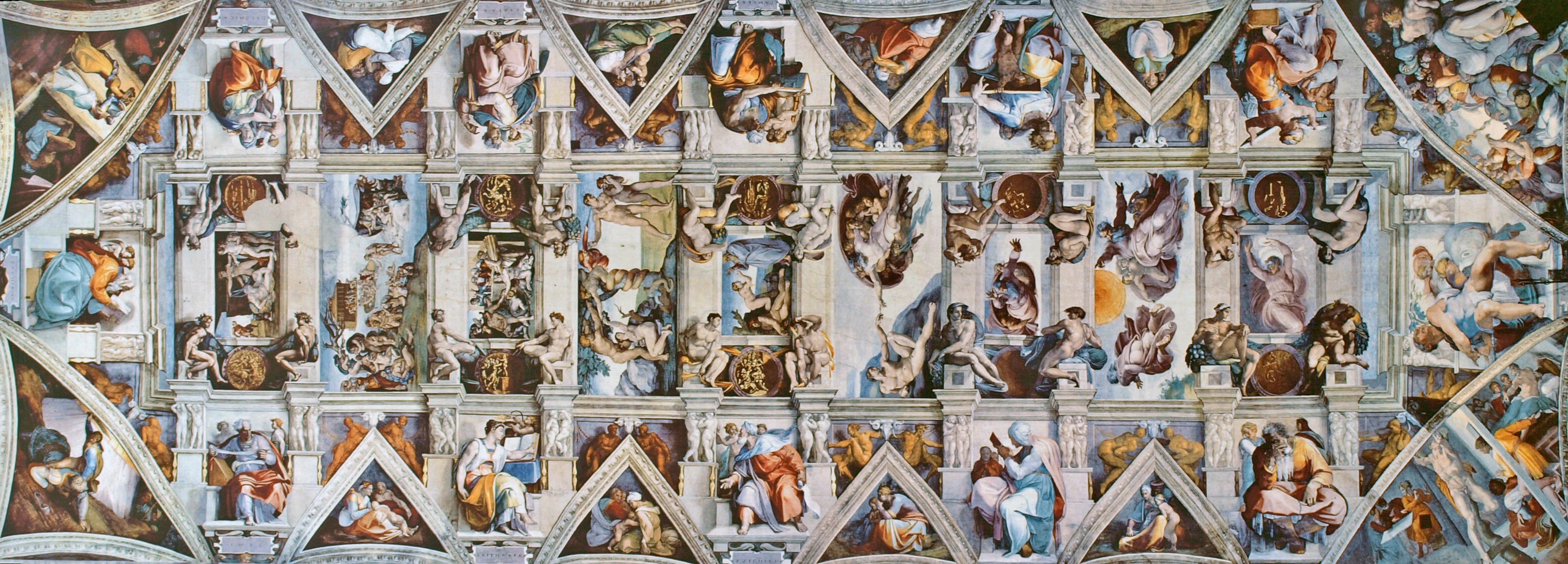
Michelangelo Buonarotti, Sistine Chapel Ceiling, 1508-1512
Michelangelo, CC BY-SA 3.0 <https://creativecommons.org/licenses/by-sa/3.0>, via Wikimedia Commons
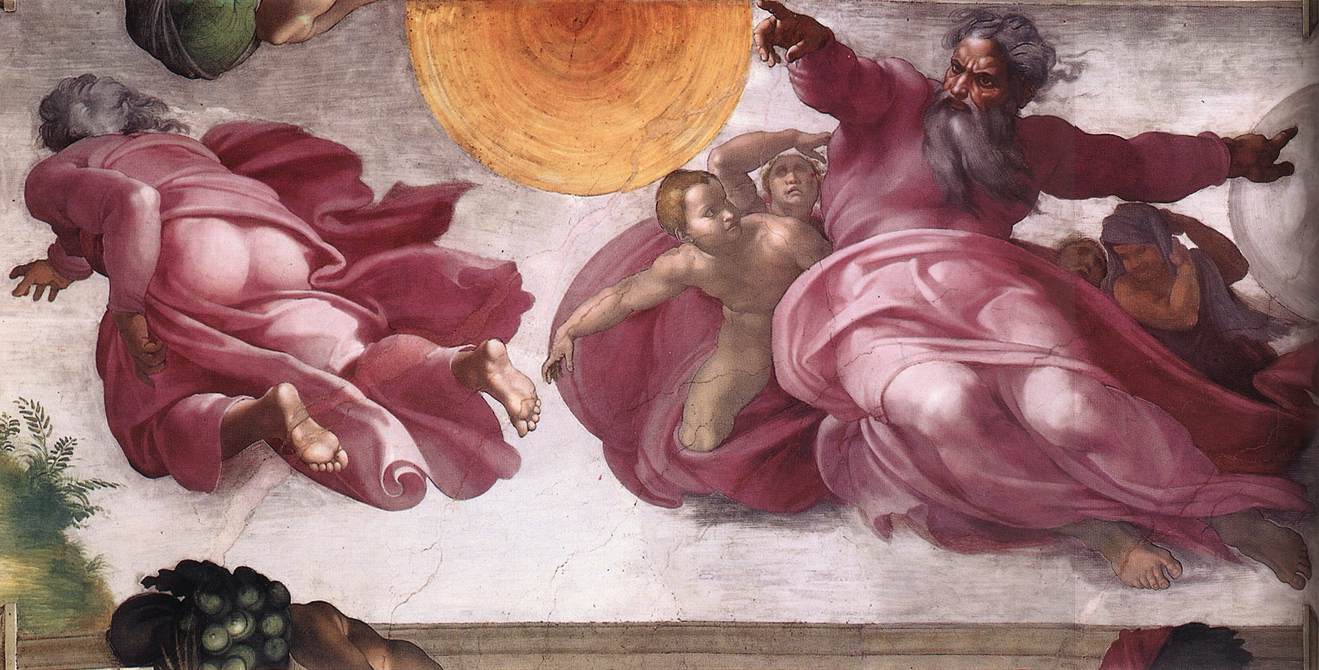
Sistine Chapel Ceiling (Detail), Creation of the Sun, Moon, and Planets
Michelangelo, Public domain, via Wikimedia Commons
From charcoal and water-based paint, new forms evolved, depending on an artist’s geographic location and on the nature of the work. ‘Tempera’, or ‘egg tempera’ emerged first in Egypt. Tempera paint is created by mixing crushed, ground, powdery pigments into a binding agent—usually the yolk of an egg. It dries with a matte, opaque surface and its colour does not alter with age, though it may appear darkened or discoloured behind a varnish overpaint. It was most often painted onto wood panels, which increased both the weight and the expense of the final product. Tempera was the dominant kind of paint used in Italy in the early to mid-15th Century, until the oil painting of the Northern Europeans found popularity, infused into artistic culture through that centre of trade for the known world, Venice.
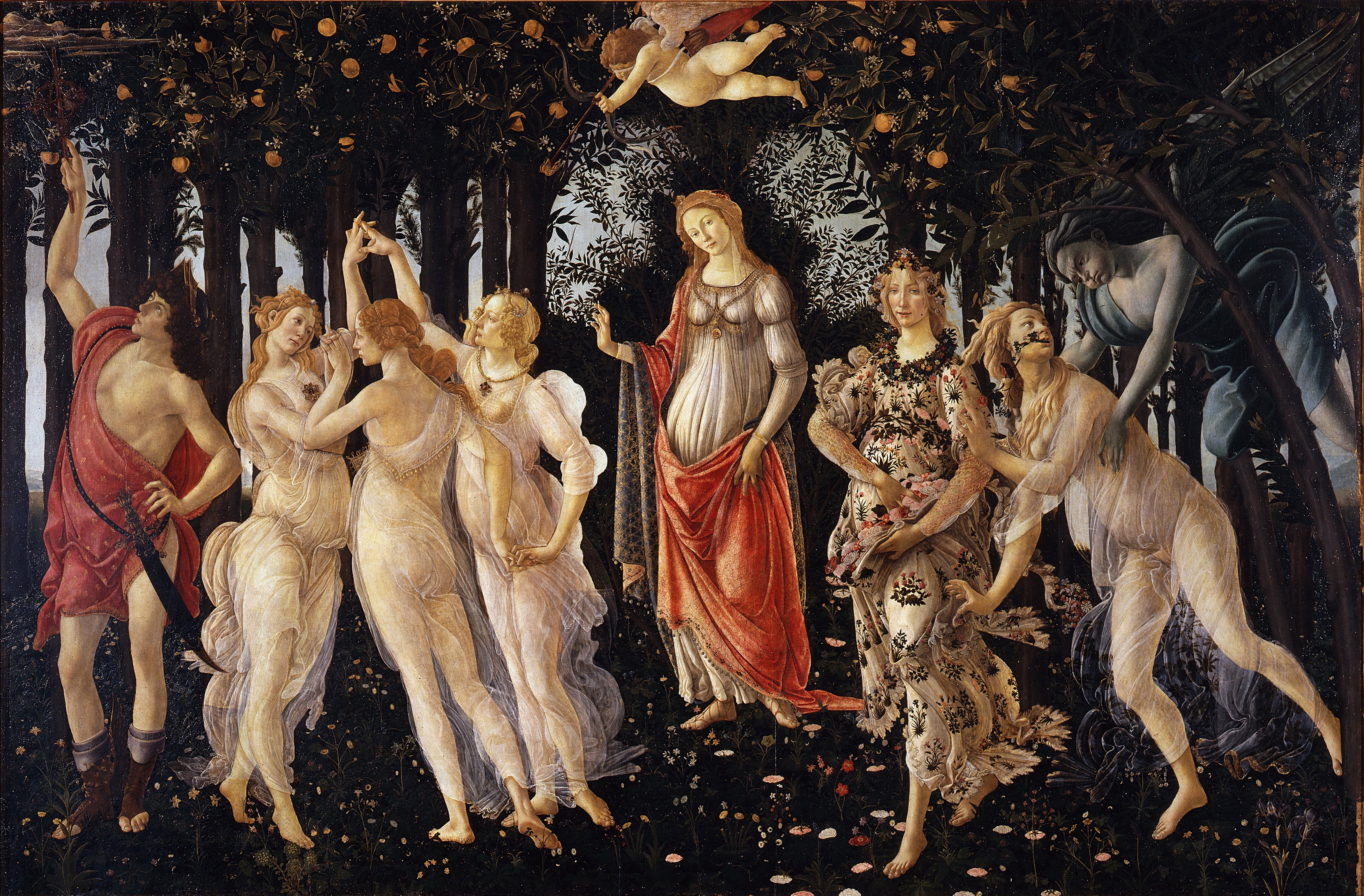
Sandro Botticelli, Primavera, late 1470s-early 1480s, tempera on panel
Sandro Botticelli, Public domain, via Wikimedia Commons
Artists substituted oil as the binding agent when making this kind of paint, and its slow-drying nature allowed a greater degree of freedom in making changes to a work as it was created. As oil painting began to proliferate, so too did a turn away from painting on panels, and instead towards canvases stretched over wooden frames. These had the advantage of being less expensive to make and much easier to transport—important for the commercially-minded Titian, the first Italian artist to produce the majority of his commissions for export. Though artists like Leonardo da Vinci and Titian adopted oil painting and used it with great success, Michelangelo remained a sceptic. He asserted that oil painting was the preserve of lazy, feminine artists like the Venetian Sebastiano del Piombo (a friend and protégé of his in Rome), and Michelangelo himself preferred to use tempera and fresco when he painted. His opinion was a minority view, however, and oil painting has become the dominant form.
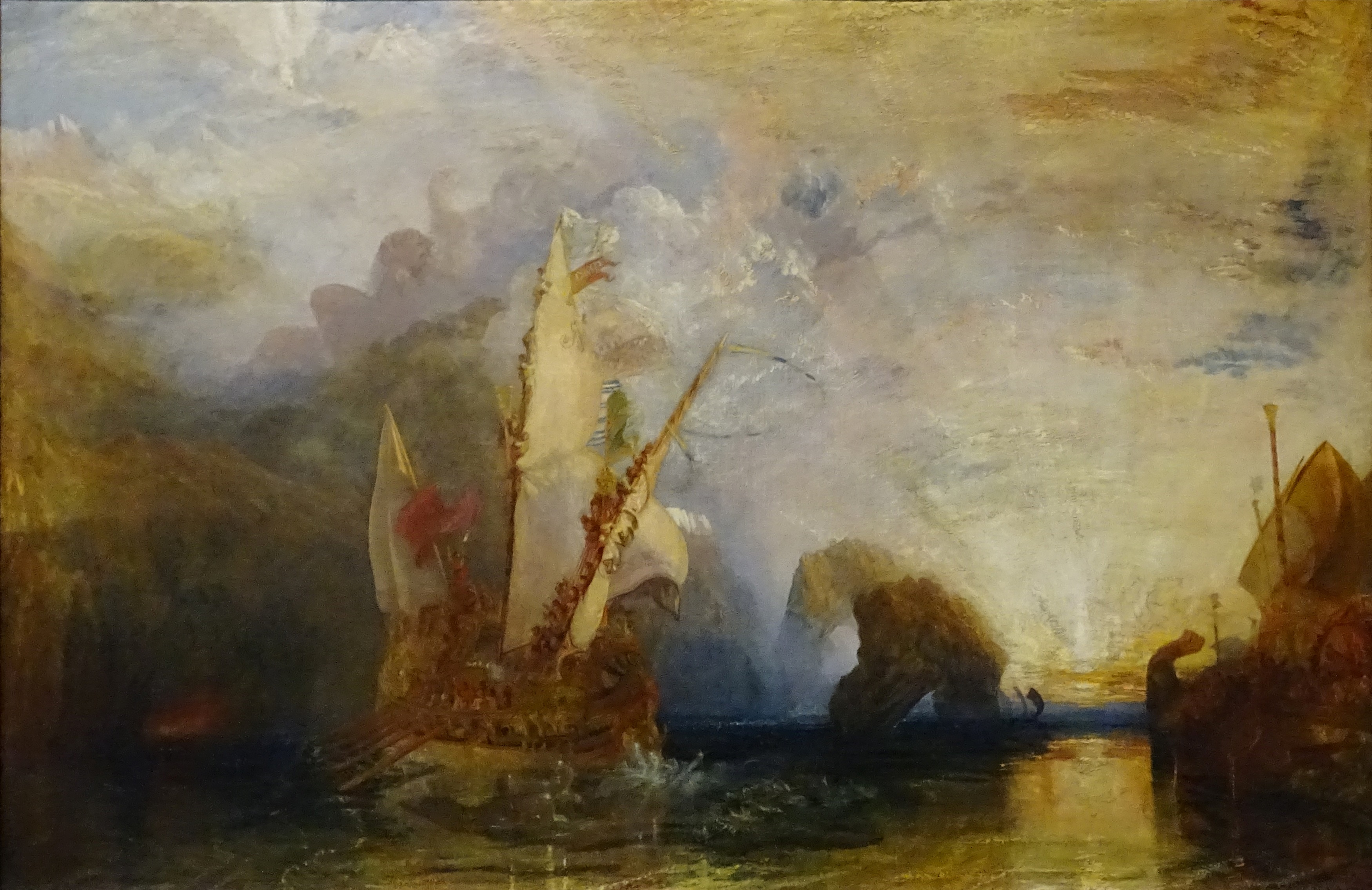
JMW Turner, Ulysses Deriding Polyphemus 1829, National Gallery London
J. M. W. Turner, CC BY-SA 4.0 <https://creativecommons.org/licenses/by-sa/4.0>, via Wikimedia Commons
Its malleability, the glow which characterises its surface, and the ability to build physical dimensionality with thick layers of oil paint (a technique called impasto), make it an extremely appealing medium. Across geographies and through the centuries—Rubens in the 17th; Fragonard in the 18th; Turner, Van Gogh, Manet, Monet, and Renoir in the 19th; Picasso, Dalí, Rothko in the 20th—oil painting proliferates. Other forms include watercolour, extant for millennium but maintaining popular use since the Renaissance, and acrylic—invented in the 20th century and similar in use to oil painting, with a reduced drying time.
Sworders’ Old Master, British and European paintings sales, along with our Modern and Contemporary sales, explore the evolution of these trends. Exemplary of the tradition of tempera on panel is the 15th Century painting by a follower of Neri di Bicci, sold by Sworders in September of 2022.
Follower of Neri di Bicci (Italian, 1418-1492) Madonna and Child enthroned egg tempera on panel with later oil additions, gilding and punchwork to the decorated edge and halo, arched top 88 x 62cm, within an integral frame (Sold for £20,800)
The 13th to 15th century in Italy witnessed the transition of tempera paint from use only for the main figural group, who would be surrounded by gold leaf secured to the panel by a sticky red substance called bole, to use across the panel to illustrate the surroundings of the group. This 15th Century piece represents an exciting transitional style, where tempera has been used to depict an architectural setting for the Madonna and Child, and where gold leaf still forms the backdrop.
Charles Edward Perugini (1839-1918) Portrait of a girl seated on a chair, bust-length in profile, in a blue dress and white blouse initialled 'CP' l.l., oil on canvas 43.5 x 33.5cm (Sold for £35,100)
A Perugini portrait of a young woman in the late 19th or early 20th century, sold by Sworders in April 2023, captures the beautiful softness possible with oil painting. Her skin glows against a nondescript background, itself perhaps referential to the earlier tradition of figures set against a decontextualised goldleaf background. Perugini’s delicate handling of the white highlights at the front of her blouse and frill of her left cuff seem to catch the light—like her skin, they are illumined.
'December Sunrise' signed 'Hambling', inscribed with title and dated '2013-17' verso, oil on canvas 30 x 80cm (Sold for £8,450)
*Maggi Hambling (b.1945) 'PORTRAIT OF THE SEA' Signed and dated '06 on backboard, oil on board 5.5 x 22cm (Sold for £7,020)
Where Perugini has used oil painting as a vehicle for light, Maggi Hambling’s two works above, sold by Sworders in 2020 and 2023, respectively, take full advantage of the impasto effect of oil painting. Impasto has a history which originates with Tintoretto and Titian in 16th Century Venice and came to a height of popularity among the Impressionists. Impasto allows the artist to assert their work in the world of the viewer; the waves threaten to tumble over the frame and into our world, and the dimensionality of the paint seems to capture the movement of a moment rather than a snapshot frozen in time.
These four works, sold by Sworders, span half a millennium. Their creators each deploy the materials available to them to different effect. Tempera and gold on panel, oil on canvas, and oil impasto demonstrate an evolution of techniques and styles across time and geographies.
As well as understanding the history behind the marks in such beautiful pieces, our team of specialists are also able to offer their expertise in valuing your works. Whether you are interested in the value of a piece or are looking for new works to add to your collection, contact our specialists today for a complimentary auction valuation and sales advice.
pictures@sworder.co.uk | 01279 817778
Ahead of our 21 May Fine Jewellery & Watches sale, join us as we explore the resurgence of bold and nature-inspired sixties and seventies jewellery designs, celebrating their timeless charm and contemporary appeal.
26 April 2024
We're pleased to present this timed auction of modern and contemporary sculpture for Eddie Powell and The Sculpture Park team. To those who know him, Eddie is a force of nature, a man whose drive, imagination and vision have led the Surrey-based park to become the fantastical wonderland that it is today, and it was clear from the outset that he would be applying this trademark enthusiasm to the creation of this sale.
25 April 2024
Discover the unexpected journey of Dan aka Mr Bigglesworthy, a chartered accountant turned design connoisseur, whose love affair with modern design began with a simple fascination for the value of vintage pieces.
25 April 2024